18 Things You Should Know Before Visiting Sierra Leone
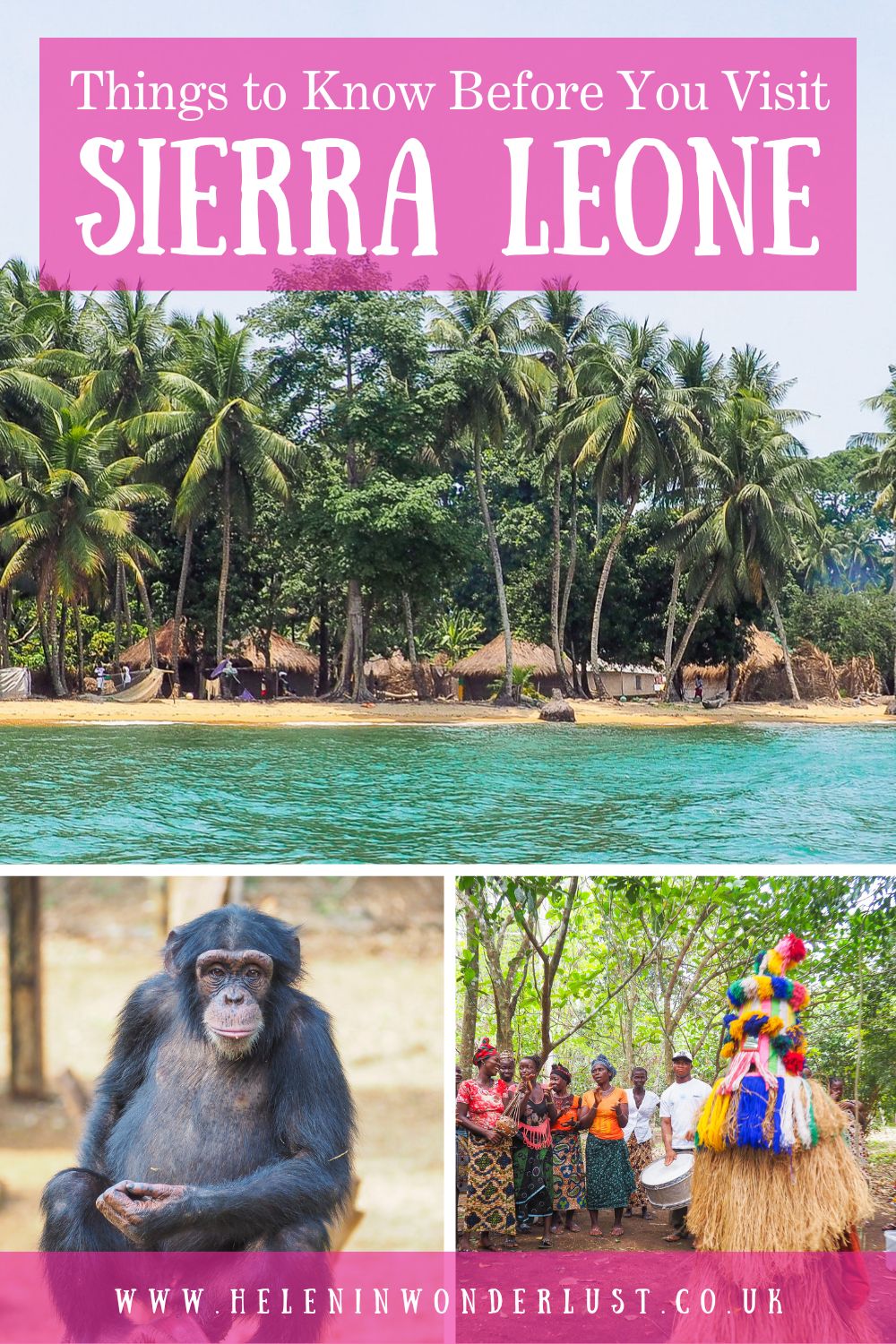
Traveling in Sierra Leone (or ‘Salone,’ as the locals lovingly call it) is an unforgettable adventure.
When I first started researching travel to Sierra Leone, I quickly realised how little had been written about this incredible country. Even 6 years later, it’s still a little visited destination (although I reckon that will change in the coming years).
It’s not the easiest destination to navigate – there’s limited tourism infrastructure, the roads are generally terrible (outside of the main tourist areas) and it’s truly off the beaten track. But for me, that’s exactly what makes it so special! It’s why Sierra Leone consistently ranks in my top African countries to visit.
So to help you have a smooth and awesome trip, I’ve pulled together a list of tips for travelling Sierra Leone. Things that I learned the hard way… so you don’t have to. Yay!
PS. Did you know that I organise Sierra Leone group trips? Click here for details.
Please Note: Some of the links in this post are affiliate links, which will earn me a small commission at no extra cost to you. Affiliate sales help with the running costs of this site, so thank you for your support!
Things To Know Before You Visit Sierra Leone
1. Getting Your Sierra Leone Visa
Most visitors to Sierra Leone need a visa to enter unless they are from one of the ECOWAS (Economic Community of West African State) countries.
You have to apply in advance and the process used to be a right pain in the bum (sending off your passport, going to the bank to pay the fees), but now he eVisa process is super quick and easy!
Process for the Sierra Leone visa:
Part 1
- Click: https://www.evisa.sl/#/home
- Click ‘Start a new VISA application’
- Choose your nationality
- Click on the type of visa you want (ie. Single Entry $80/Multiple Entry $160)
- Click ‘Apply’
- Register with your email and click ‘Get Code via Email’
- They’ll send you a code to your email
- Enter the code
- Click ‘Login’
- Agree to the T&C’s
Part 2
- Enter your personal information
Part 3
- Purpose: Tourism
- Host Name: Enter the name of your travel company
- Host Address: Enter the address of your travel company
- Enter your arrival date
- Click ‘Save’
- Tick the box next to your application and click ‘Checkout’
- Note your application ID and reference number.
- Click ‘Debit or Credit Card’
- Pay your fees – it will add on a small admin fee
- Once it’s gone through, go to your application and it should say ‘Submitted’ in Yellow
- Then wait for approval
- You should get an email from Paypal (as that’s who process the visa payment)
Once approved you will get an initial email saying you have been approved. You will then get a second email with your visa letter. You need to print this and bring it with you.
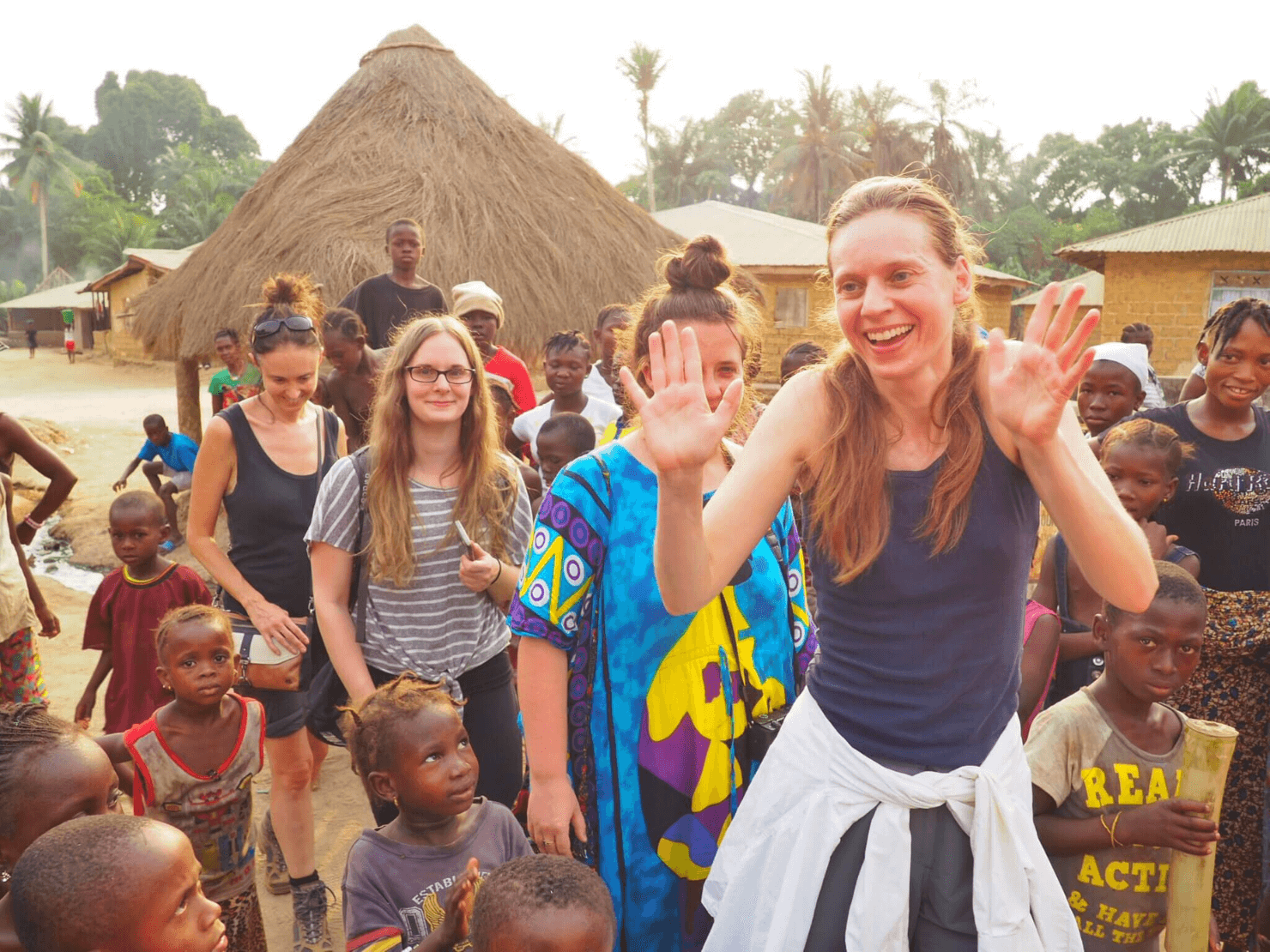
2. You’ll Need a Yellow Fever Certificate
All travellers to Sierra Leone must have proof of Yellow Fever vaccination (or a valid exemption certificate). Remember, the Yellow Fever vaccine takes about 10 days to become effective, so if you don’t have it yet, be sure to plan ahead.
When I arrived from Ghana, no one asked to see mine, and the risk of Yellow Fever in Sierra Leone is very low – only one case was reported between 2021 and 2022. However, since it’s an official entry requirement, you’ll need it to comply with regulations and I wouldn’t chance it.
3. You Need to Pay Security Tax at the Airport
All passengers traveling through Lungi International Airport are required to pay a $25 security tax for both arrival and departure.
You can pay this fee in cash at any of the banks located at the airport when you arrive or depart. Once paid, you’ll receive a receipt, which is necessary to either leave the terminal upon arrival or pass through security for your departing flight.
Or if you want to pay in advance, you can pay on the Securipass website.
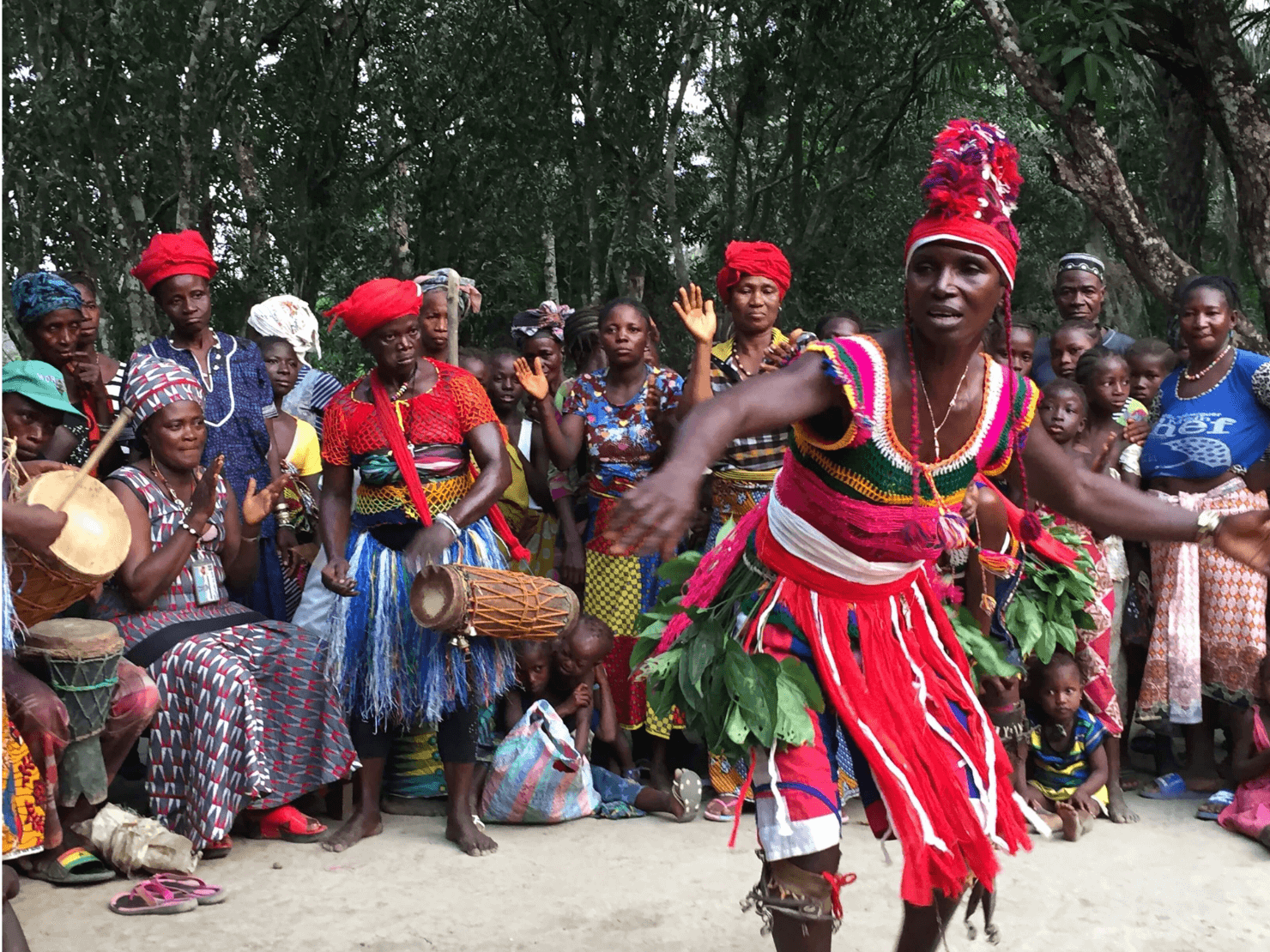
4. You Need to Get a Ferry from the Airport to Freetown
One thing to know is that Lungi International Airport, where you will most likely arrive, is not in the capital, Freetown, but in Lungi, a town across the bay (because Freetown is very hilly).
So you will need to organise your water taxi transfers – ideally in advance.
If you are travelling with a travel agent, they will organise this for you. If travelling independently, there are a couple of companies that do the transfers Sea Coach Express and Sea Coach Express and Sea Bird Express that take people from Lungi to Aberdeen in Freetown.
5. The ‘Official’ Language is English
I was always put off from travelling in West Africa because I can only speak a little bit of French, but one thing that may surprise you is that Sierra Leone’s official language is English, not French like many of the surrounding countries.
Saying that I found that once you’re out of the cities and in the villages, English isn’t that well-spoken (despite the children being taught in English in schools – this is a whole other issue), so you may struggle if you don’t have a local guide with you, especially in more remote places. But generally speaking, anywhere that hosts tourists will usually have at least a few English speakers.
The most widely spoken language in Sierra Leone is Krio, an English-based creole spoken by around 90% of the population. As an English speaker, you can often pick up the gist of what’s being said, but speaking Krio fluently is a whole other challenge!
Other major languages include Mende and Temne, spoken by the two largest tribes, along with several regional languages.
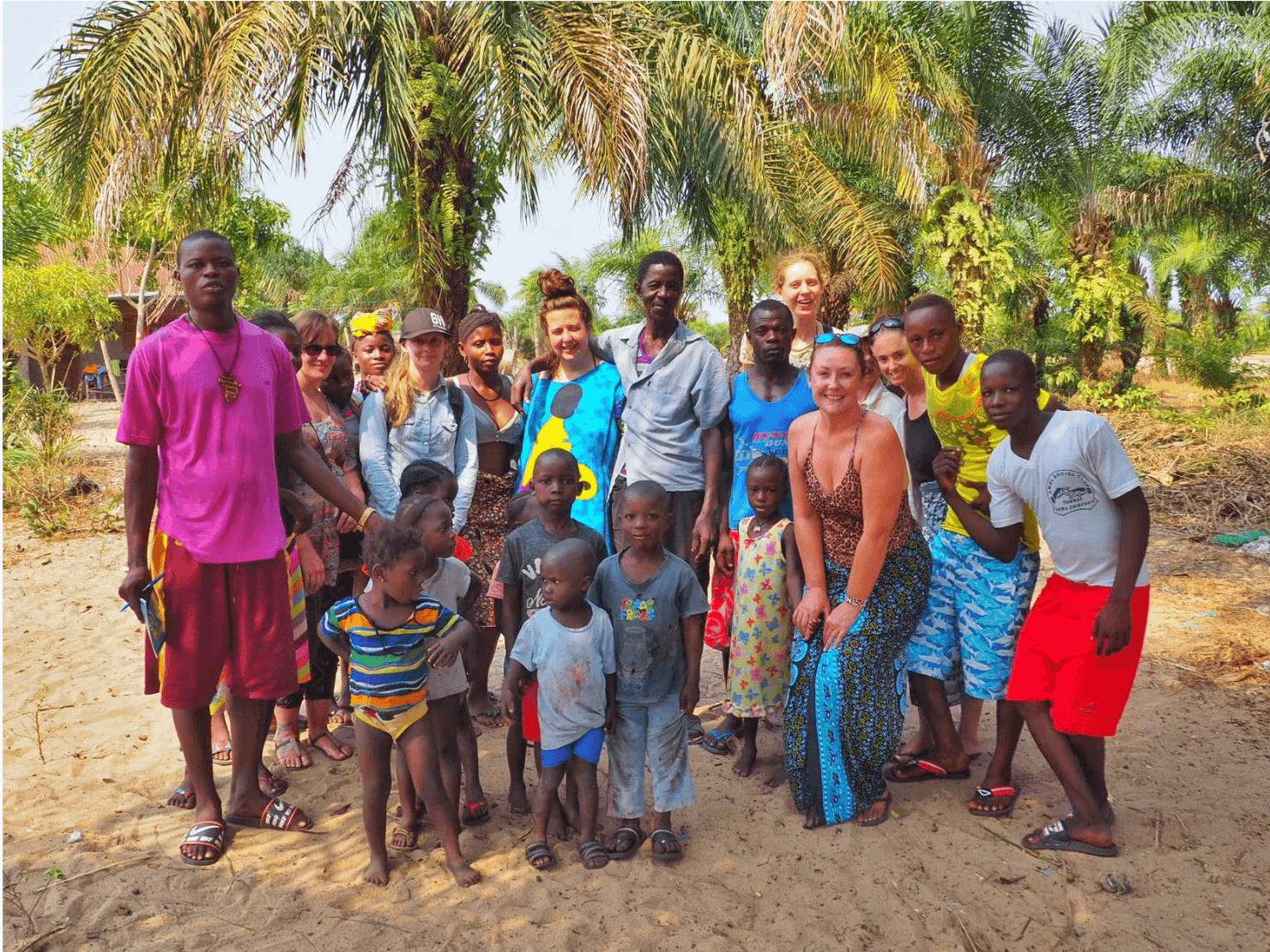
6. The Currency of Sierra Leone is the ‘Leone’
The currency of Sierra Leone is the Sierra Leonean Leone (SLL), with an exchange rate of approximately 26 Leones to the British Pound and 20 to the US Dollar (according to online currency conversions, although on the ground we got 24 Leones to the USD).
Previously, the currency had three extra zeros, but after a re-denomination, the zeros were removed. However, some currency conversion apps still show the old rates with the extra zeros, so keep that in mind. Locals also sometimes quote prices in the old format, so don’t be surprised if you hear amounts in the thousands!
Sierra Leone has a closed currency system, meaning you can only get Leones once you’re in the country. The best exchange rates I found were at the airport or through street money changers arranged by our guide.
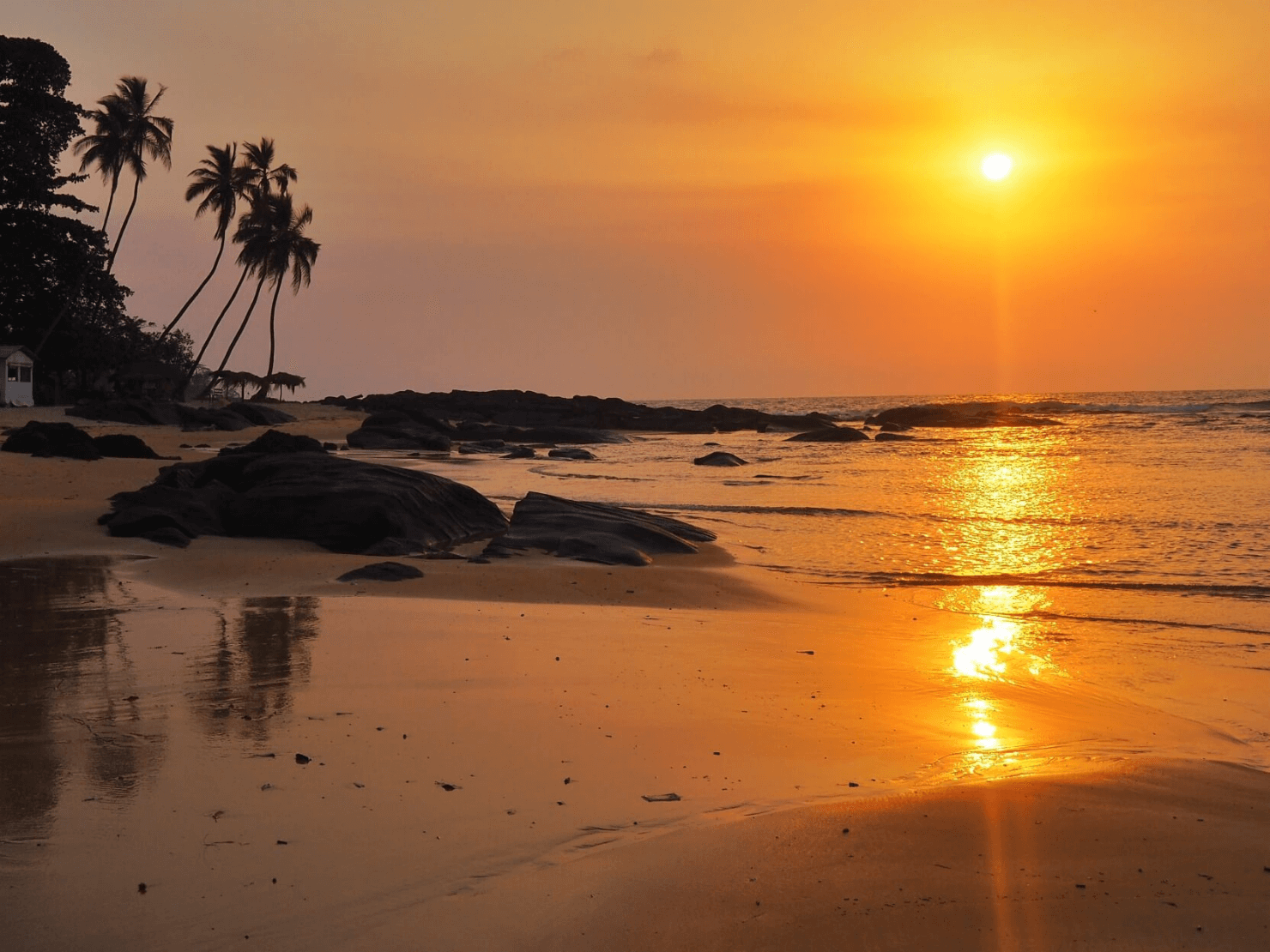
7. Cash is King, Especially Outside of Freetown
In Freetown and on the Peninsula, many hotels and larger restaurants accept cards. However, in the provinces, very few places do – so cash is king.
You can pay for some items in foreign currency, primarily USD. Many businesses, especially in tourist areas, will accept it, but the local currency, the Sierra Leonean Leone (SLL), is generally preferred for most transactions.
Given these challenges, it’s often easier to carry cash – Leones and Dollars for payments, and USD, Euros, and GBP (in that order) for exchange—rather than relying on ATMs. Always check with vendors if you’re unsure whether they accept foreign currency.
As in many parts of Africa, higher denominations attract better rates (e.g., $50 and $100 bills). Ideally, these should be dated 2017 or later (our hotel in Freetown would only accept bills from 2017 onward), with none earlier than 2009 or 2013.
If you’re traveling through cities like Freetown, Bo, Makeni, or Kenema, you can usually exchange money. The most common way to do this is through street money changers, known as ‘dollar boys.’ While they are plentiful, remember that this practice is technically illegal, so it’s best to arrange a money changer through your guide (if you have one).
For a more secure option, banks, hotels, and authorised money exchange services also offer currency exchange, though often at slightly less favourable rates.
For those who prefer a more secure option, banks, hotels and authorised money exchange services can provide legitimate currency exchange, albeit sometimes at less favourable rates.
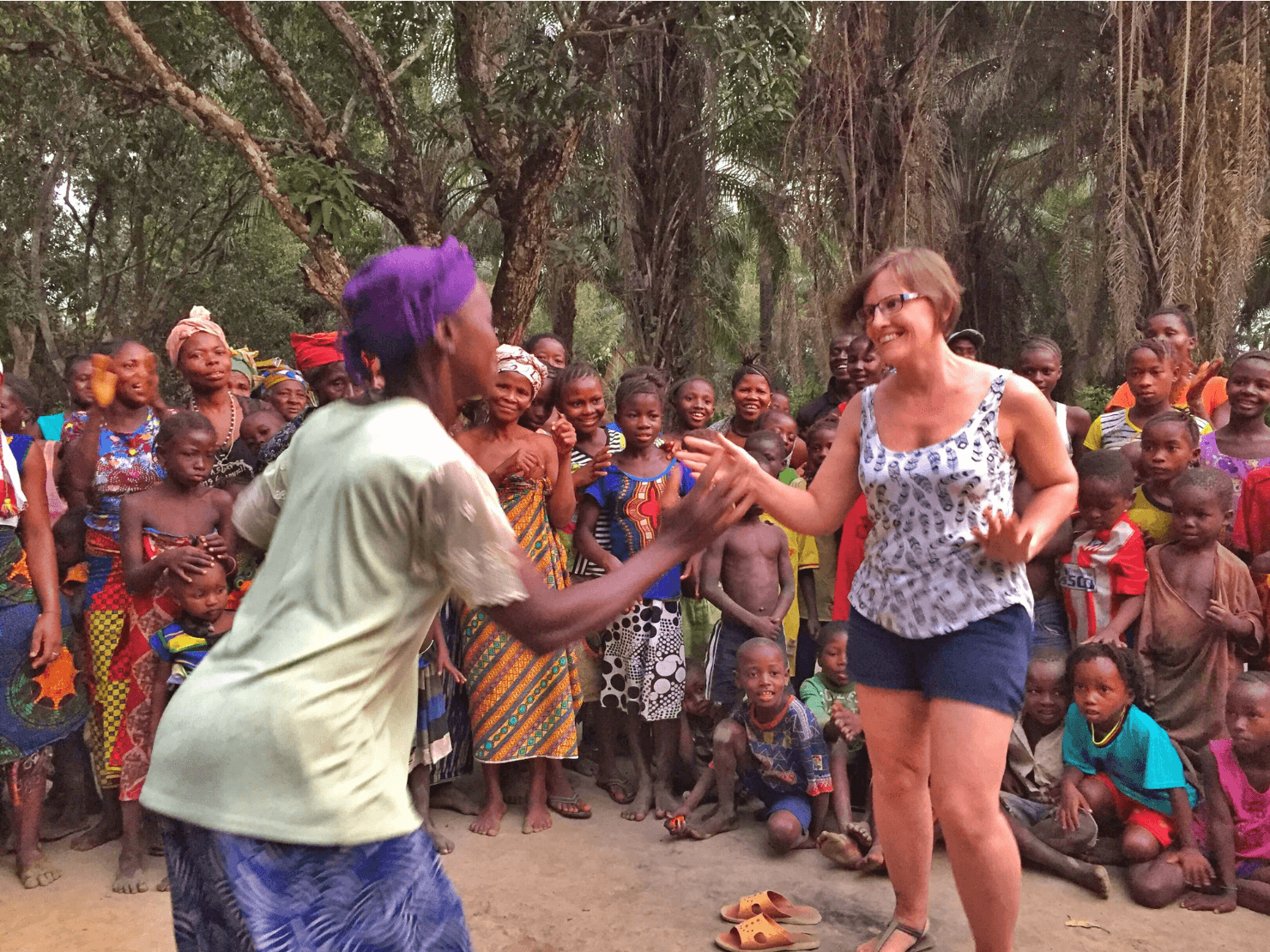
8. There Aren’t Many ATM’s
ATMs are scarce in Sierra Leone, and even when you find one, you might not always be able to withdraw cash. When you do manage to get money, the process can be quite slow, as you’re limited in the number of notes you can withdraw at one time. This means you’ll often need to repeatedly insert your card to get the cash you need.
There are a few ATMs in Freetown and at Lungi International Airport (which has had a makeover and is a very nice airport these days), as well as some in Bo. I believe there are additional ATMs in other cities, but I didn’t visit them myself.
If you’re in need of cash, you can also obtain a cash advance on your card at Rokel Commercial Bank, provided you have your passport. Although fees can be high and it can be time-consuming!
Please Note: For the most accurate and up-to-date information, it’s always best to verify details about ATM availability and banking services in Sierra Leone before leaving Freetown, as these can change.
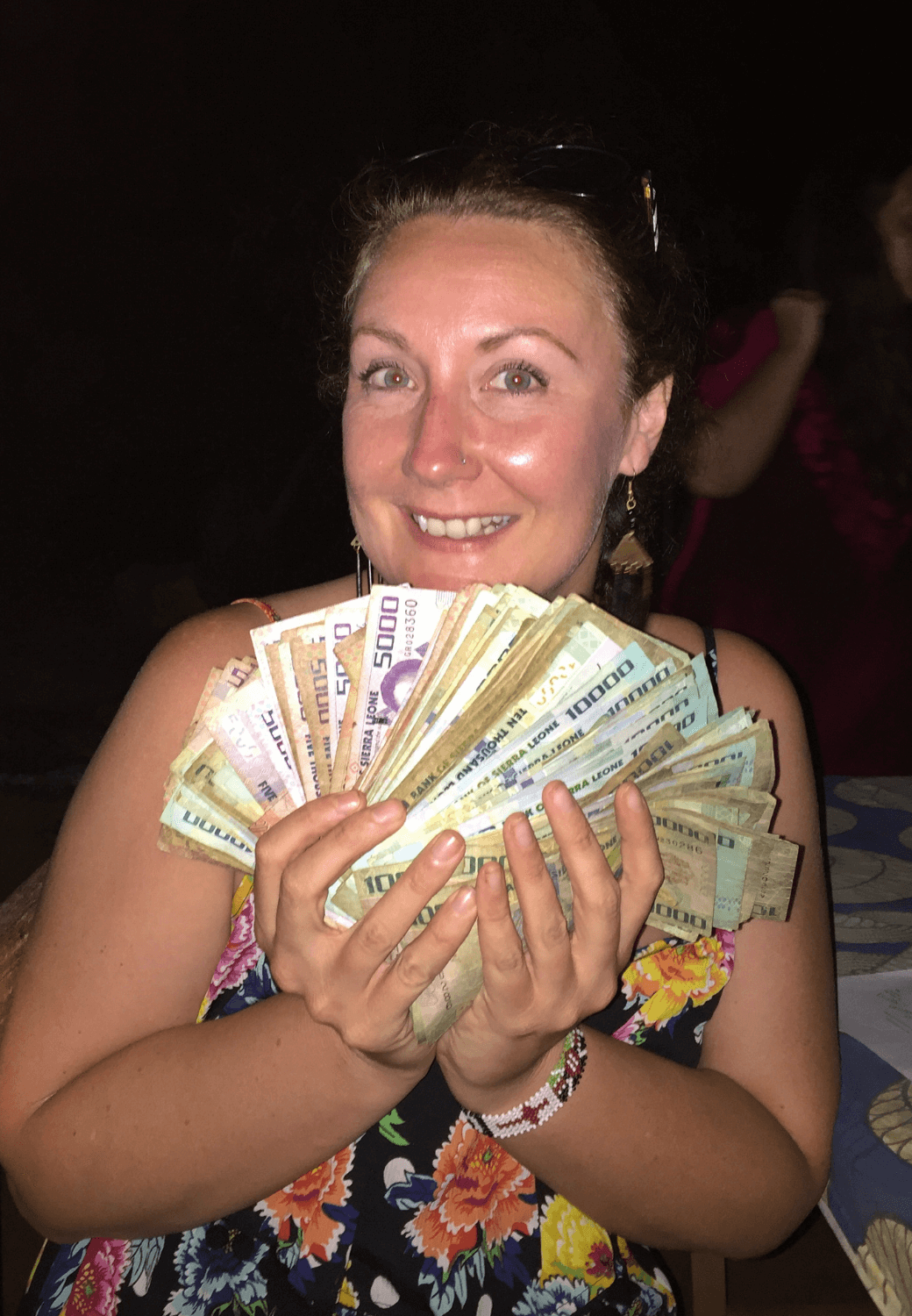
9. You’re Going to Need a Bigger Bag
Naturally, the more money you exchange for Leones, the larger bag or purse you’ll need to carry it all!
For instance, if you convert $50 into Leones (approximately 1,048 SLL), you’ll end up with at least 52 notes in your wallet, so sometimes you need a backpack instead.
During one of our group dinners on the Banana Islands, we spent $215 – quite reasonable for a group of seven. However, that translates to 4,300 Leones, which is at least 215 notes (and likely more, considering we had smaller denominations as well).
Counting all that cash took a bit of time, especially after a few glasses of wine!

10. If You Haven’t Eaten Rice, You Haven’t Eaten
The staple food is rice and Sierra Leonians will often tell you that if they haven’t had rice, they haven’t eaten. They love the stuff. Rice is to a Sierra Leonian, what ugali is to a Kenyan, but there are less options in Sierra leone so you’ll eat a lot of it even as a tourist.
But there are lots of other great food too, groundnut stew, potato leaf stew, okra, loads of fresh fish (some of the best I’ve ever had), plus loads of delicious fruit and coconuts.
Star is the main local beer and you may also get to try some palm wine too. Sangria is readily available and sold in cartons! If you see a drink called Cody’s Vody – avoid at all costs! This stuff is loopy juice (like a vodka Redbull – but far worse).
There is also a large Lebanese ex-pat community in Sierra Leone, so you’ll be surprised at how much great Lebanese food there is on offer too! Which means lots of yummy hummus…. the best I had was at dalton’s on the Banana Islands and Crown Bakery in Freetown.
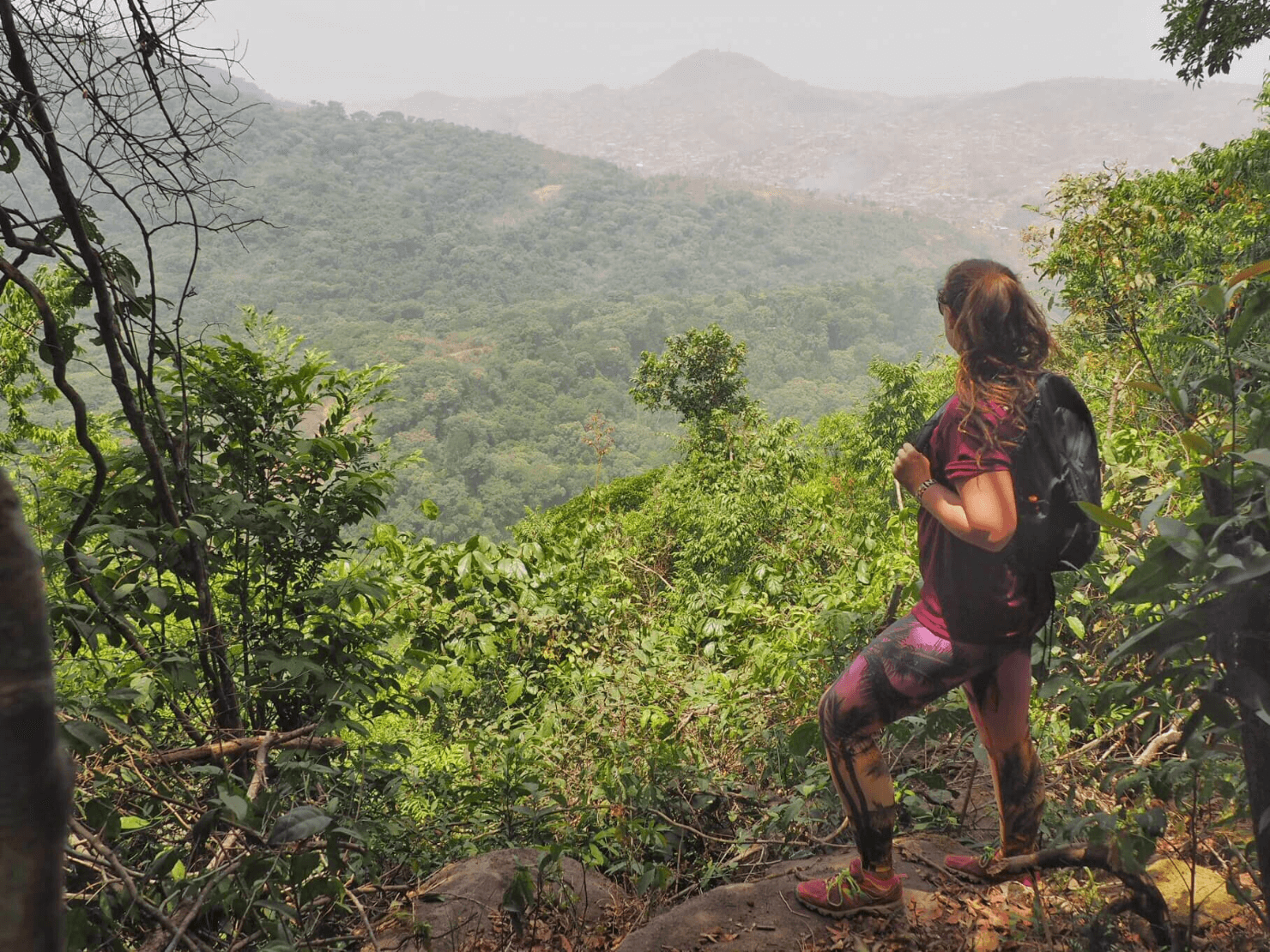
11. You’ll Probably Never See a Pygmy Hippo
One of the major highlights of Sierra Leone is seeing a pygmy hippo at Tiwai Island. Or so we’re told.
Sorry to be a party pooper, but you’re probably never going to see one. They are very rare and very elusive in the wild and even the researchers who camp out for weeks on end don’t see them very often.
I mean there’s a chance, but… don’t build your hopes up. I’ve been twice and there was no sign of them!
For the record, I do a fantastic pygmy hippo impression (well, at least what I think it would sound like – like a high-pitched regular hippo?) and I will show you if you come to Sierra Leone with me. That’s a promise.
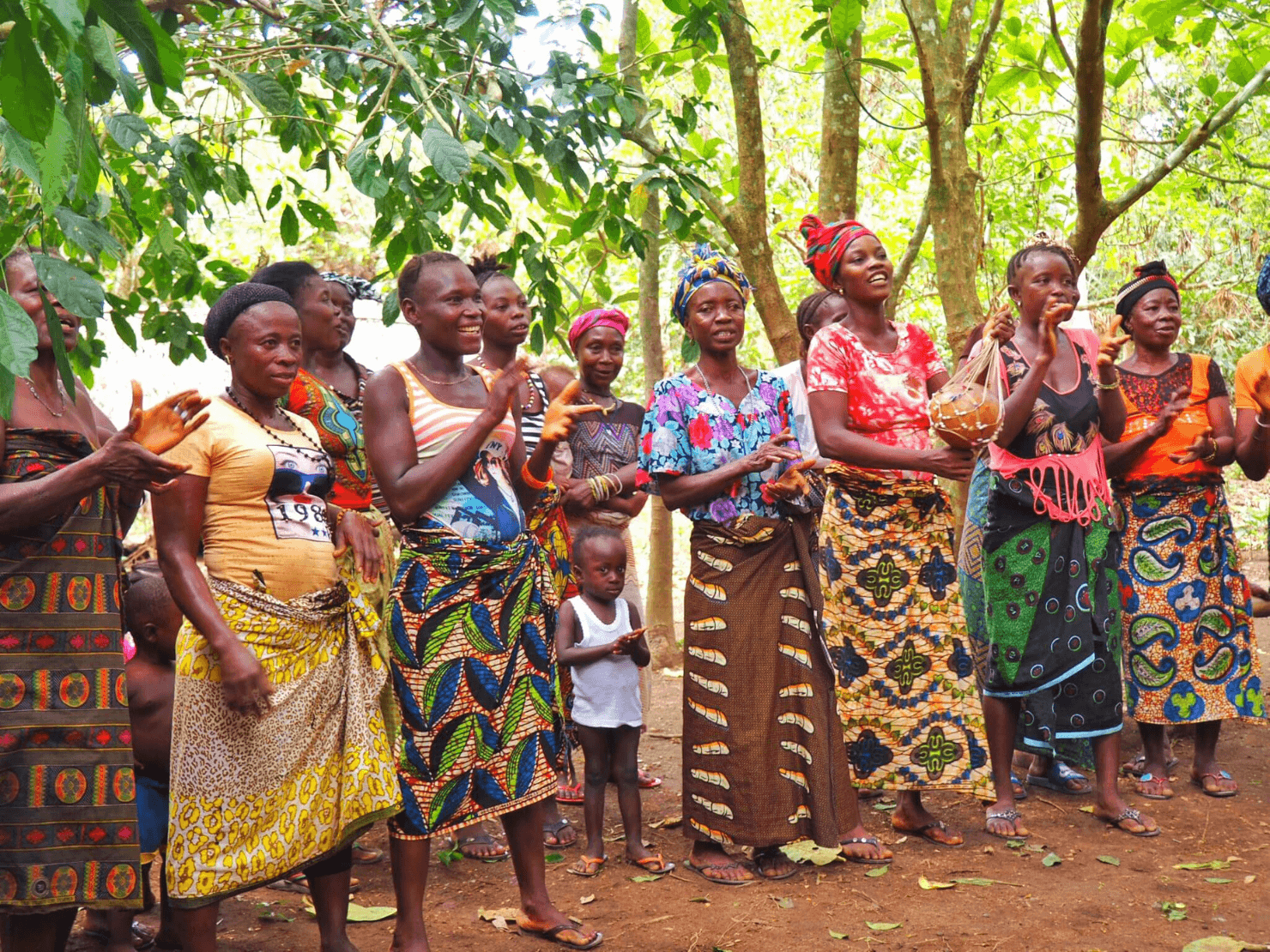
12. ‘Oporto, Oporto, Oporto’
Foreigners in Sierra Leone are often called ‘Oporto,’ which is the equivalent of ‘Mzungu’ in East and parts of Southern Africa.
The term is named after the Portuguese explorer Pedro de Sintra, one of the first European visitors to the area and the person who named the country ‘Sierra Leoa,’ meaning ‘Lion Mountains.’
In some places, they are called ‘Pumwe’ (I think that’s how it’s spelled).
So, if you hear either of these terms being called out (repeatedly and at high speed/volume) as you walk or drive by – usually by very excited children (and some adults) you now know why.
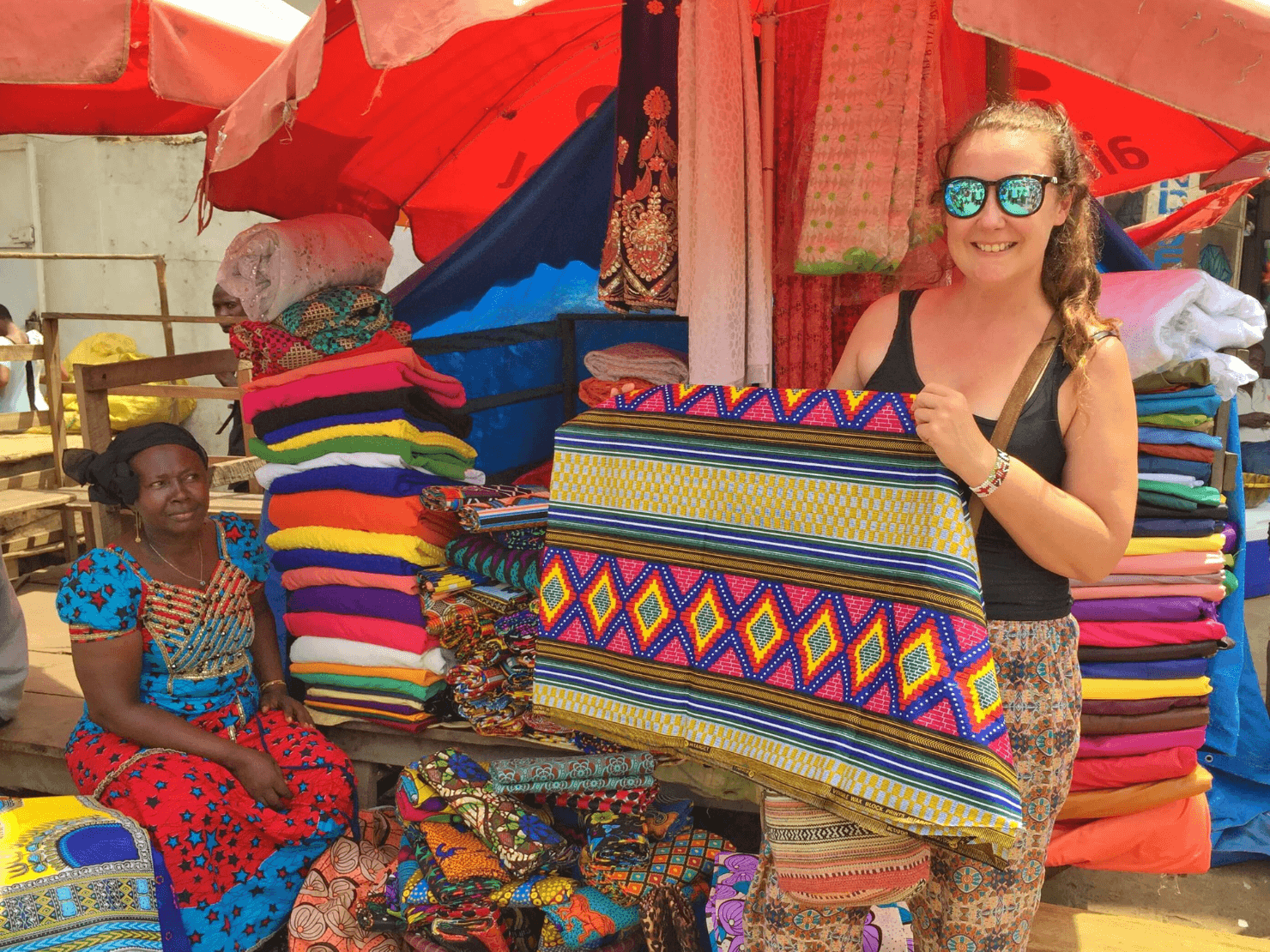
13. Avoid the Rainy Season
Sierra Leone has two distinct seasons. The rainy season. And the dry season.
The “best” time to Visit is Sierra Leone is in the dry season, between late November and April, when the roads are at their best, making it easier to get around (although the seasons are weird these days).
Most visitors to the country travel between December and February. However, this is when the Harmattan wind blows, giving the sky a hazy look and making the air very hot and dry.
It’s pretty humid all the time, but less so December to March! Peak humidity is between July and November.
May sees the start of the rains, but they’re not too bad yet and this is when the annual Street Child Marathon takes places.
June to October brings the bulk of the rains, with July and August being the wettest months. This time of year is best avoided as some roads can become completely impassable, mudslides are common and the mosquitoes are at their worst.
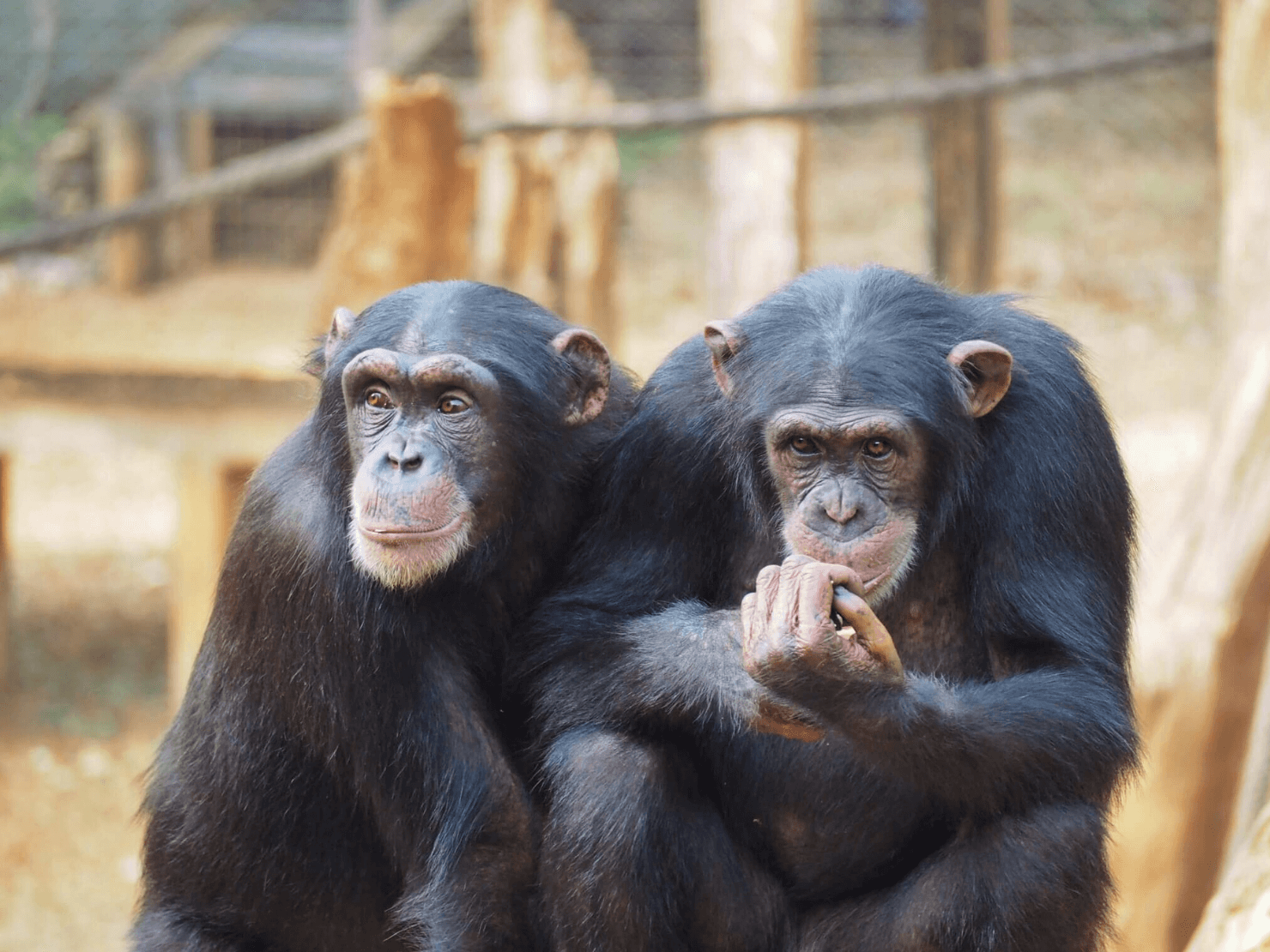
14. Beware the ‘Champion’
There is a small creature in Sierra Leone called the ‘Champion’. It resembles a long ant and is orange and black in colour.
I’ve encountered this creature before, rarely, but in Kenya and Tanzania, where it is commonly known as the ‘Nairobi Fly‘. Other names I’ve heard it called include ‘Dragon Bug’ and ‘Acid Bug’ – see where I’m going with this?
This small bug tends to make an appearance after heavy rains, and unfortunately, it showed up during my visit in November 2024. Interestingly, I didn’t encounter any when I visited in March 2019.
If you accidentally brush against or squish one on your skin (as I did), it releases a chemical called pederin, which can cause a nasty burn. The sting isn’t immediate – it develops over a couple of days.
If you spot one on your skin, avoid swatting it away. Gently blow it off or pick it up carefully, then wash the area immediately with soap and water to reduce the risk of irritation.
My experience was particularly unpleasant. I didn’t even notice the burn at first – I suspect the bug got trapped under my necklace, maybe even while I was asleep – but it became incredibly sore and stung every time something rubbed against it, like clothing, saltwater, sunscreen, or bug spray.
If you do get burned, apply a steroid cream to reduce inflammation and resist the urge to rub or scratch it – it only makes things worse (I learned this the hard way as a chronic fidgeter!).
15. The Tourist Trail Isn’t Quite ‘There’ Yet
Travel in Sierra Leone is unique because there is very little in the way of tourist infrastructure.
Traveling in Sierra Leone offers a truly unique experience, largely because there’s very little in the way of traditional tourist infrastructure.
It exists, but it’s far from the polished, well-trodden paths you’ll find in other parts of Africa. And honestly, that’s what makes Sierra Leone so special.
When we arrived in villages, we weren’t just another group passing through the “tourism machine.” We were a novelty. The locals were incredibly welcoming, and their excitement to see us felt so genuine. On the Turtle Islands, people would literally just come and watch us—it was equal parts hilarious and heartwarming!
At times, it felt like they weren’t quite sure what to do with us. Even when they knew we were coming, we’d sometimes end up awkwardly waiting while a plan came together on the spot.
But that’s what made it so unforgettable. It was raw, real, and absolutely perfect.
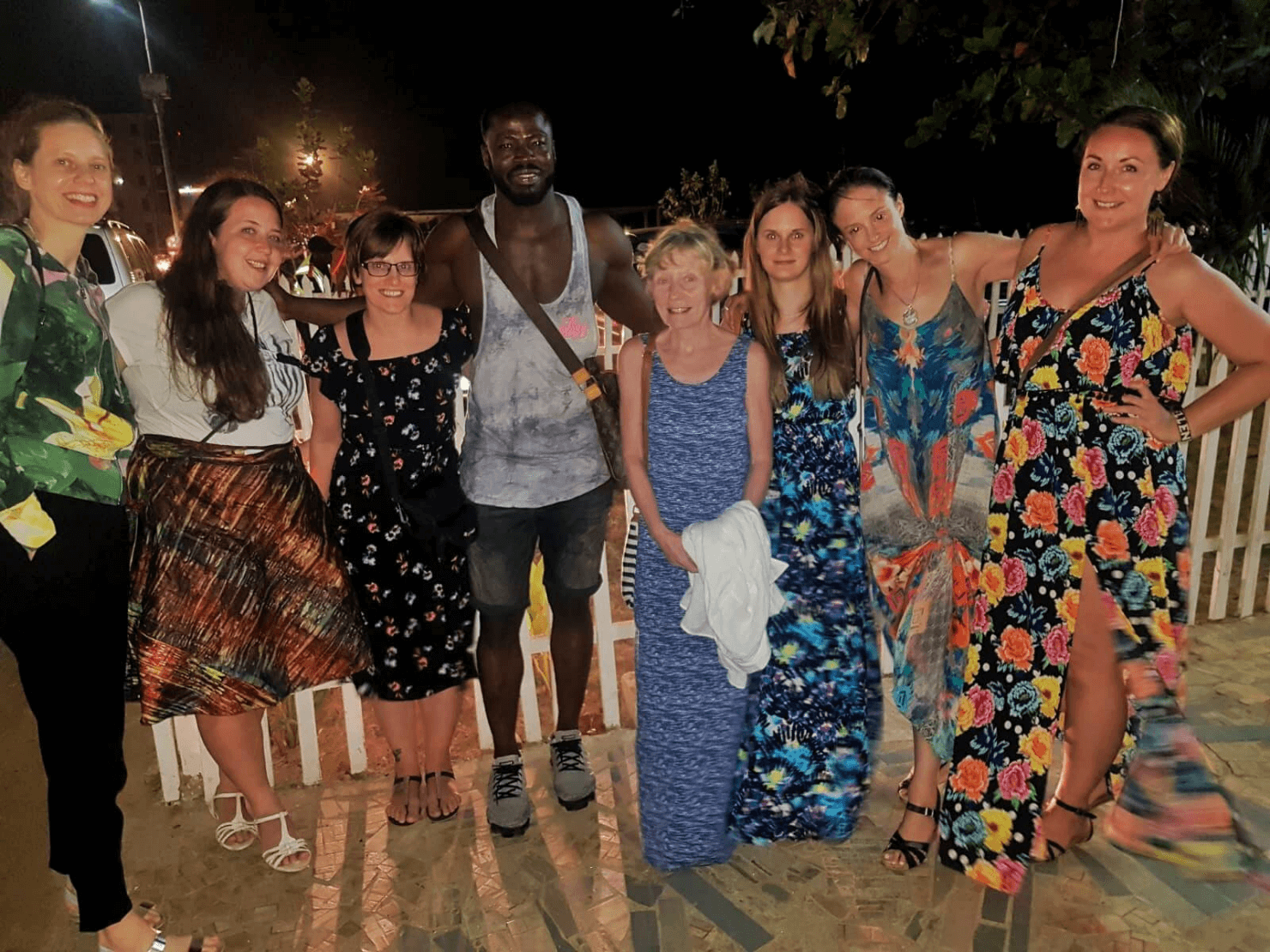
16. It’s Not the Best Place for a Solo Traveller
I’ll say it again, travelling in Sierra Leone was an amazing experience.
In fact, it’s my favourite travel experience of the last few years, maybe on par with the climbing Mount Nyiragongo in the DRC, swimming with whale sharks in Mozambique and road-tripping Botswana.
But it’s not the easiest place for a solo traveller. Don’t get me wrong, Sierra Leone felt very safe and as a female traveller, I had no particular worries at all. I received far less hassle and far fewer marriage proposals here than I do in Tanzania or Malawi.
However, we barely saw any other tourists (both times). Everyone we met was either a visiting Sierra Leonian, a resident Sierra Leonian, an NGO worker (we met quite a few people from Mercy Ships) or a business traveller.
There are very few hostels, so if you’re going to Sierra Leone with the intention of making some buddies to travel around with, to experience things with and to share costs with, then you may be disappointed.
But if you’re a pretty intrepid traveller who likes alone time, then you might love travelling solo in Sierra Leone. If you want to meet people, the best places would be Dalton’s or Bafa Resort on the Banana Islands or Bureh Beach at the surf school or Lumthubul Gardens I reckon.
Not saying that you won’t meet any locals, of course, you will and that’s great. But they all have jobs to do and aren’t there to entertain you the whole time, so you may find yourself a little lonely, especially during the evenings.
Also, as a group, we were able to do really cool things like visiting the remote Turtle Islands. As a solo traveller, that wouldn’t have been possible for me as it’s very expensive due to the complex logistics involved.
I love to travel solo and don’t mind my own company, but I don’t think I would have enjoyed it half as much in Sierra Leone had I not travelled in a group. That’s the honest truth.
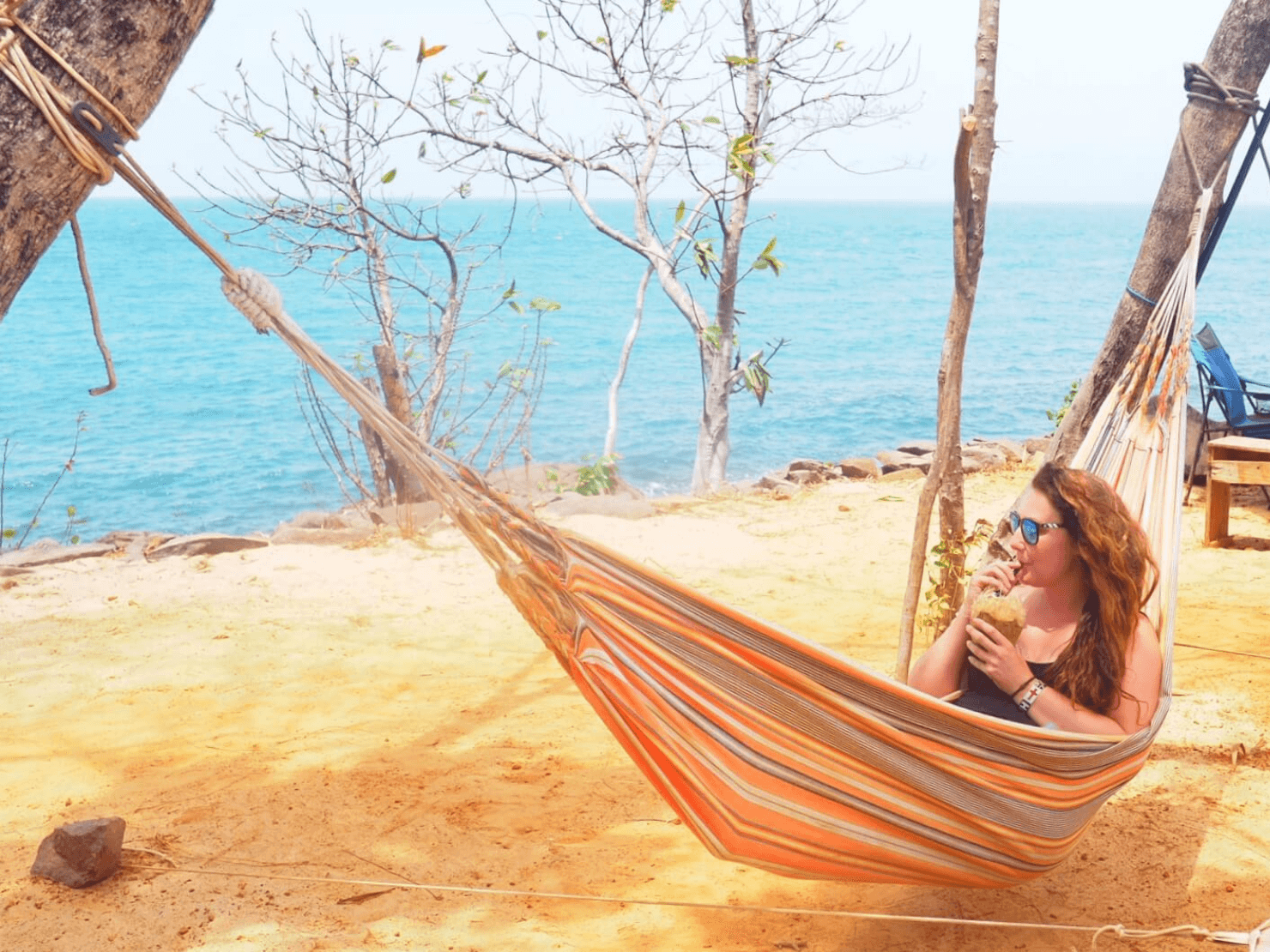
17. Make Sure You Don’t Get Into ‘Beef with the Chief’
When we visited the remote Turtle Islands, home to the Sherbro people, we stayed on an island called Bakie and visited another island called Sei.
When we arrived on Bakie, the deputy chief came to meet us. We said our hellos and asked permission to stay on the island. It was all very nice and we were welcomed as guests.
The following day, we went exploring and sailed over to Sei, accompanied by a couple of the guys from Bakie, and our deputy boat captain.
We knew we had to speak to the harbour master and get permission from the chief, so when we arrived the harbour master came over, we paid him for his services, he assigned us a guide and I assumed we were being taken to the chief.
We were happily strolling along when we met the chief. Let’s call him chief 1. I said hello, shook his hand and said it was nice to meet him, but he seemed annoyed.
He was angry we hadn’t spoken to him first. I thought we’d arranged this all through the harbour master.
He told me off. He told our guides off. I apologised. For a second I thought we were going to get thrown off the island. But he let us walk on.
As we walked, I turned to the group and said ‘Bloody hell, we’ve only been here 5 minutes and we’re already in ‘Beef with the Chief’ – the name stuck and we still giggle about it to this day.
We met another chief, he seemed very nice. Let’s call him chief 2. We continued and met another chief, he was also very nice. Let’s call him chief 3.
As we walked, one of our guides from Bakie whispered to me ‘The chief wants to have a word with you’. Uh oh, what have we done now? And which chief now has beef?
As it turned out, chief number 2 was now pissed. He started shouting at our guides. We heard the words ‘big mistake’ numerous times as they argued in Krio.
Eventually, he softened and we were free to go.
On our way back to the boat, we bumped into chief 1 again. He went to speak and I braced myself for another telling off but instead, he said “Thank you for visiting our island. You are welcome again. Please tell all of your friends to come here!” He was all smiles and hospitality.
The chiefdoms are very complex – there’s the paramount chief, town chief, section chief and a lot of internal politics. Especially when money is involved. I’m still not 100% sure why everyone was so annoyed and who we were supposed to see first and how we were meant to do it. No-one seemed able to explain this to us.
Maybe the harbour master hadn’t negotiated a big enough deal with us? Maybe the chiefs felt undermined? Either way, the moral of this story is… make sure you always ask to see the top chief first (whichever one that may be at that time) and seek his permission before you do anything.
18. It Has the Best Beaches in West Africa
Sierra Leone has some incredible beaches, the best I have seen in West Africa for sure.
Sadly, Lumley Beach in Freetown is a bit of a mess, with lots of rubbish, but the beaches on the Freetown Peninsula are beuatiful. Places to add to your list include River No. 2 Beach, Tokeh Beach and Bureh Beach.
I also love the Turtle Islands,.
Other Sierra Leone posts you might enjoy…
- The Best Things To Do in Sierra Leone & Itinerary
- Sweet, Sweet Salone: What It’s Really Like to Travel in Sierra Leone
- My Top 12 Best African Countries to Visit
- The Safest Places in Africa
- Do I Need a Yellow Fever Certificate to Travel to Africa?
If you would like to join one of my Sierra Leone group trips click here for details.
Have you been to Sierra Leone? Any Sierra Leone things to know or tips to add to the list?
Pin This Post For Later
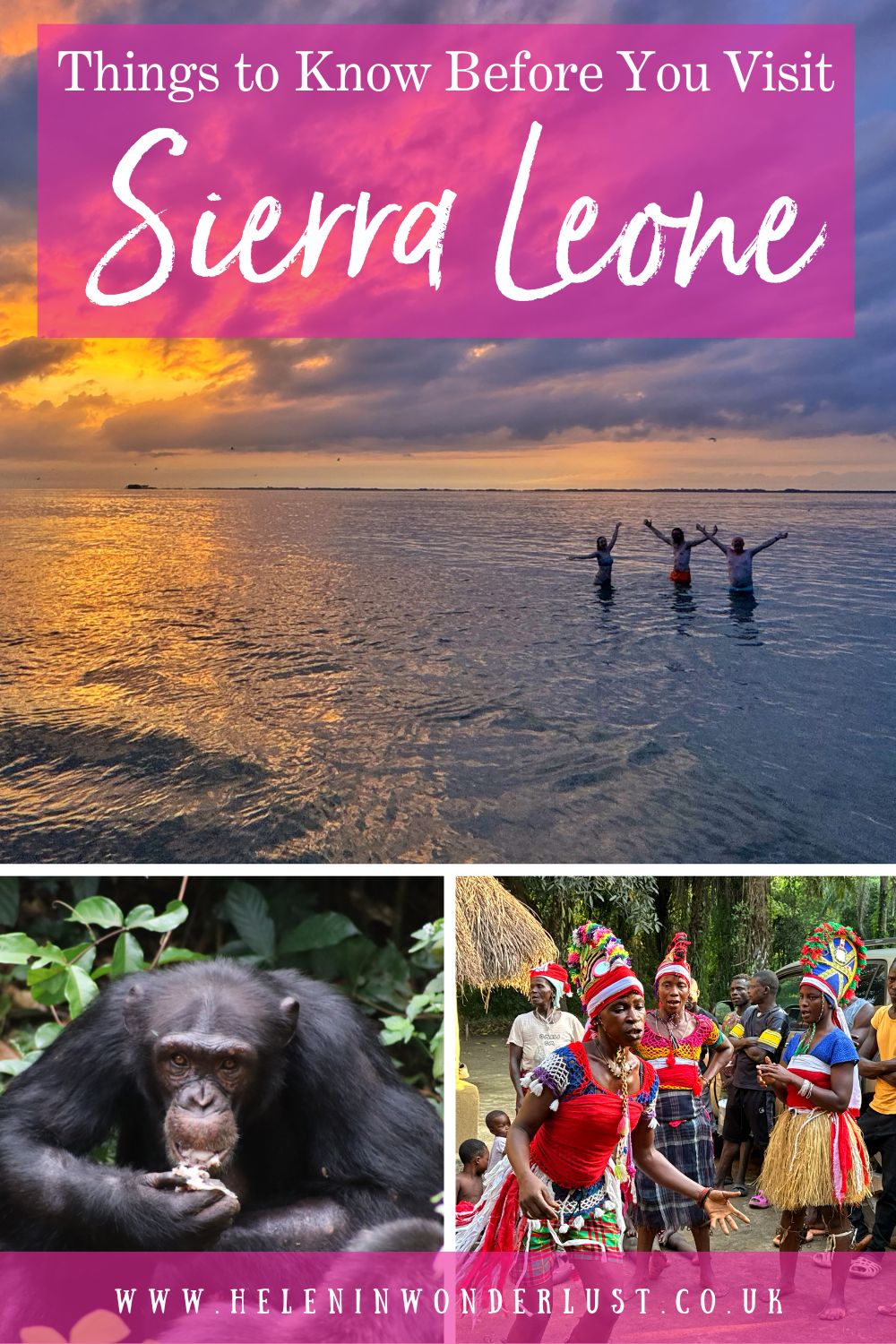


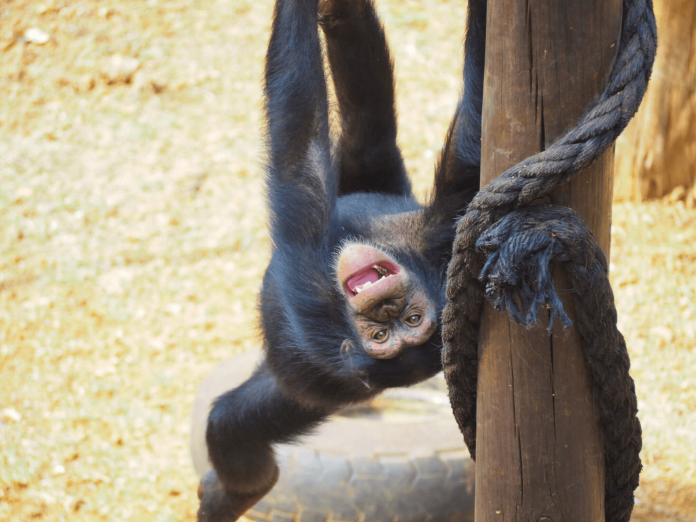
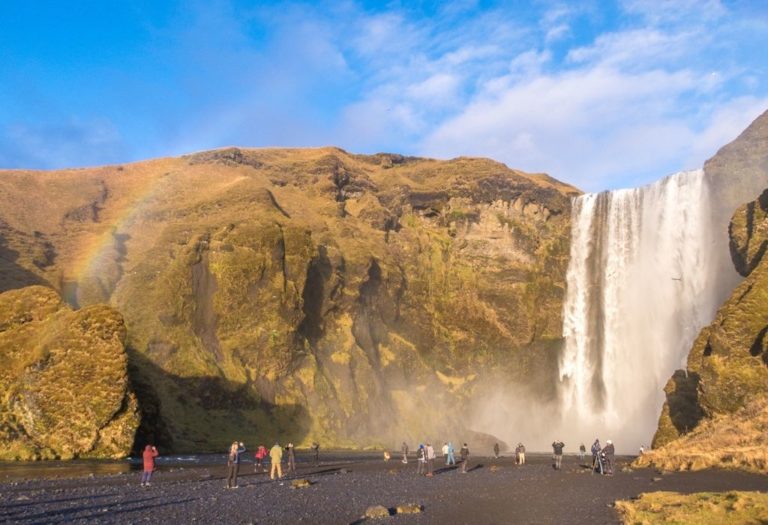
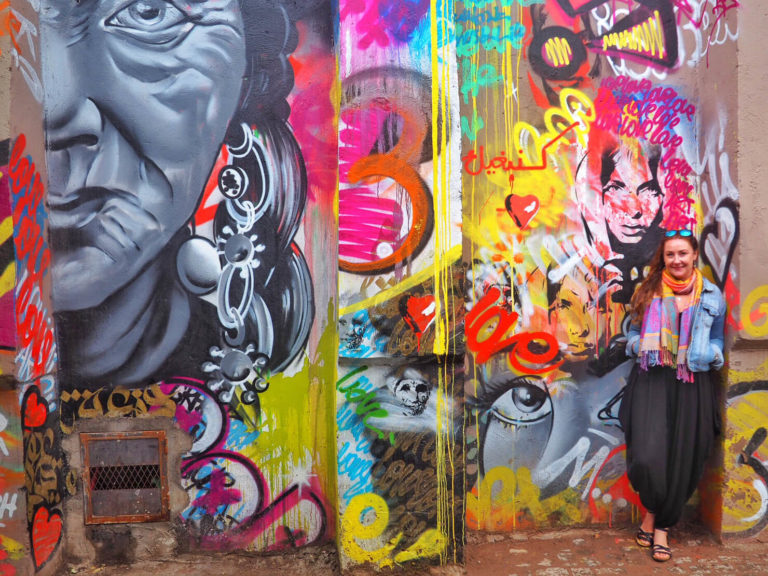
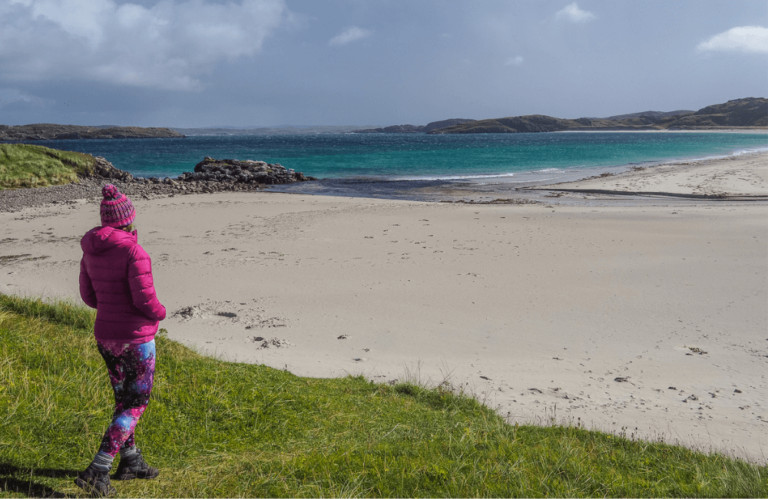
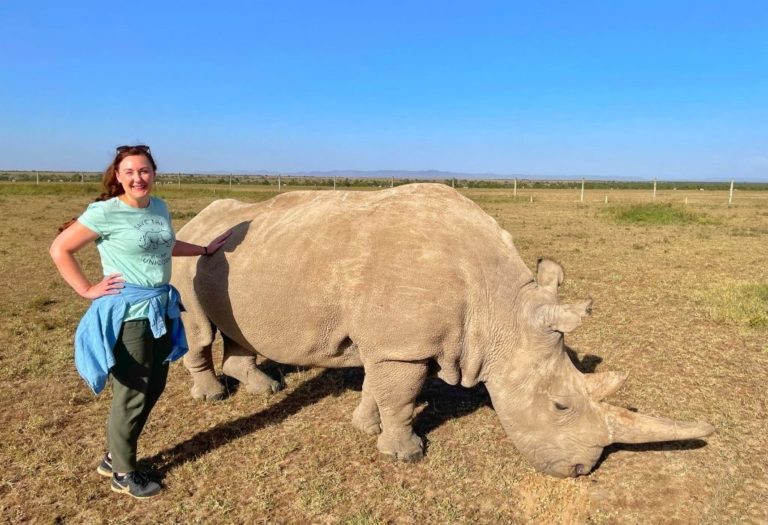
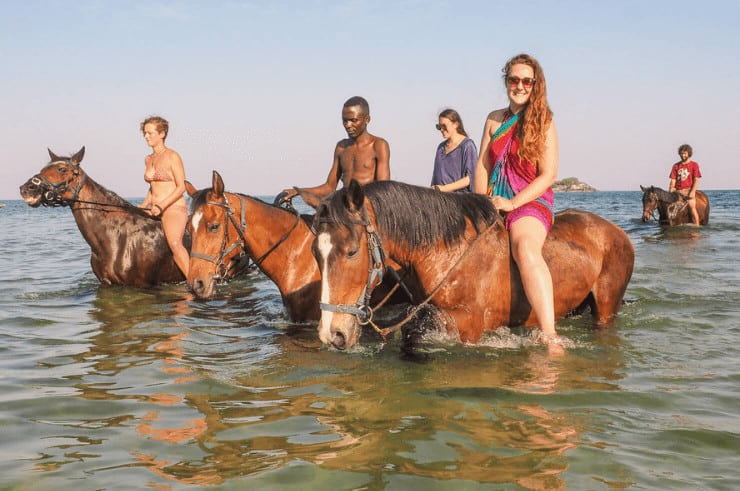
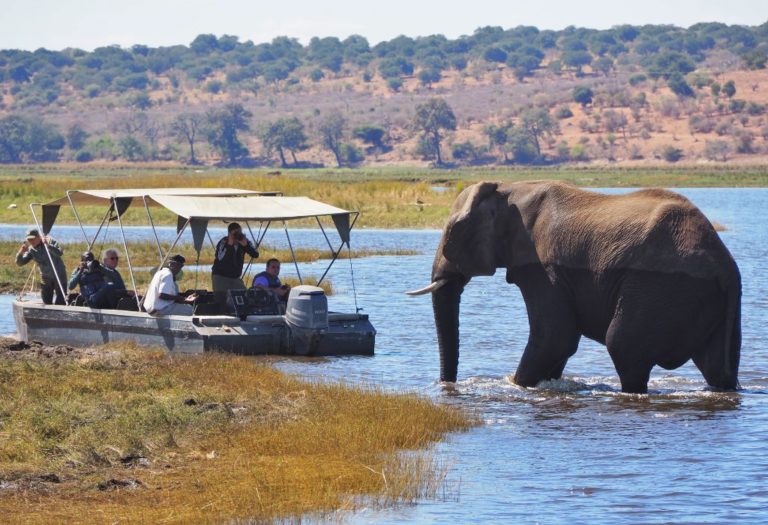
Wow you’ve opened my eye up to this country I hadn’t really thought of before. I like the fact its not really on the tourist trail but that can also make it hard for a solo traveller like myself!
Fantastic, makes me want to travel, though it will stay on the bucket list for a while. As a coin collector, I found it particularly interesting how small is the value of the largest banknote. I love your blog!
Love this and love the way you write! Have been looking into visiting Sierra Leone for a while… this covers everything no one else has covered!
Noon x
Thanks Noon! 🙂
These are the most beautiful beaches that I’ve ever seen, thanks for showing that it’s possible to go off-the-beaten-path and be safe.